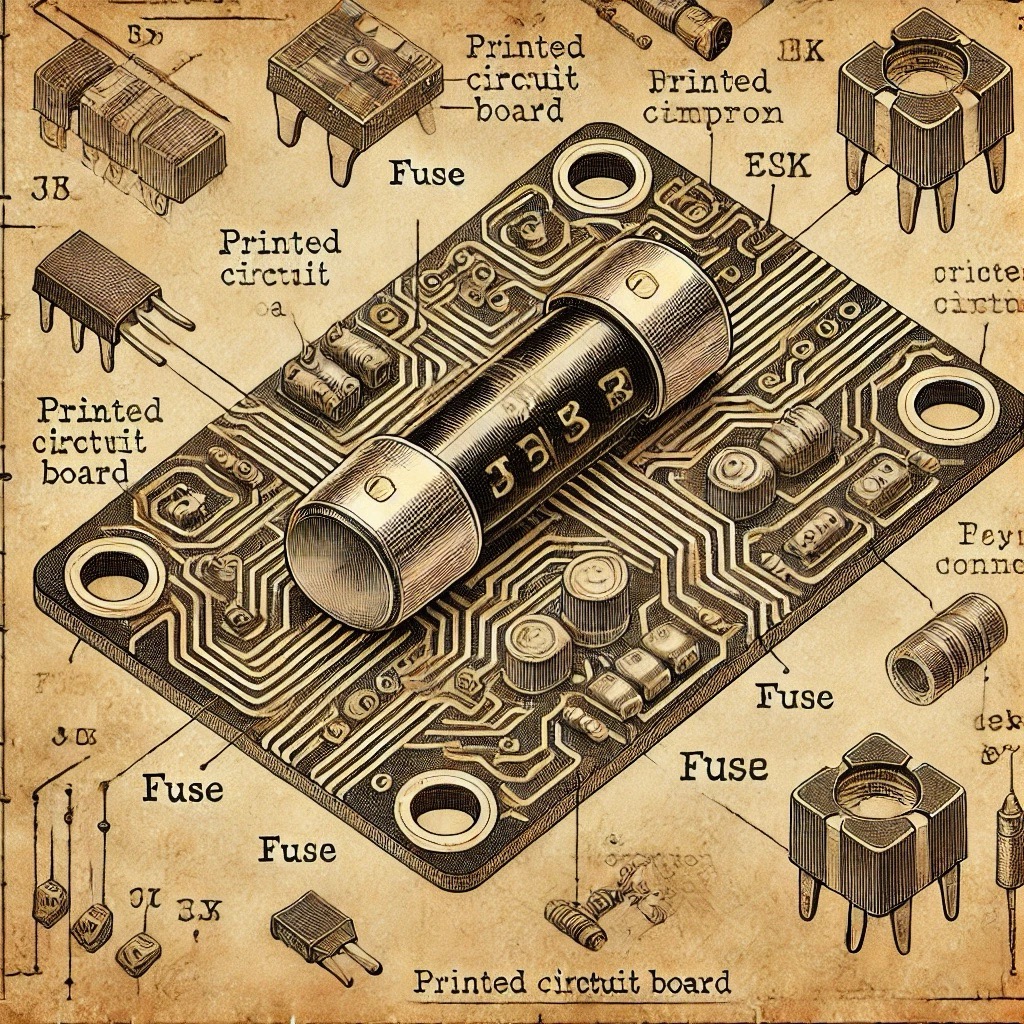What is a Fuse?
A fuse is a protective electrical device that interrupts the circuit when the current exceeds a predetermined level. Fuses prevent damage to electronic components by disconnecting power in the event of overcurrent or a short circuit. They are designed to 'blow' or melt when the current is too high, breaking the circuit and protecting other components.
Types of Fuses
Fuses come in many different shapes, sizes, and ratings, but they generally fall into a few key types:
1. Fast-Acting Fuses
Fast-acting fuses (also known as quick-blow fuses) immediately blow when the current exceeds the rated capacity. They are used to protect sensitive electronic components like semiconductors, which could be easily damaged by even a brief surge in current.
2. Slow-Blow Fuses
Slow-blow fuses (also called time-delay fuses) tolerate short-duration spikes in current without blowing. These are useful in circuits where inrush currents may occur, such as in motor-starting or power supplies. They provide protection from sustained overloads rather than momentary spikes.
3. Automotive Fuses
These fuses are designed specifically for vehicles and typically come in blade form. Automotive fuses are widely used in DC circuits within cars to protect electrical systems from overcurrent.
4. Resettable Fuses
Unlike traditional fuses, resettable fuses automatically restore themselves after being tripped. These fuses, commonly known as polyfuses or polymeric positive temperature coefficient (PPTC) devices, increase their resistance in response to high current, protecting the circuit. Once the fault is removed, they return to their normal state.
Fuse Ratings
Fuses are rated based on two important parameters:
- Current Rating: The maximum current the fuse can handle before blowing. Measured in amperes (A).
- Voltage Rating: The maximum voltage at which the fuse can safely operate without arcing. Measured in volts (V).
It is crucial to select a fuse with the appropriate current and voltage ratings for the specific application. Using a fuse with a lower current rating can cause unnecessary blowouts, while using a fuse with a higher rating can fail to provide adequate protection.
Applications of Fuses in Electronics
Fuses are essential in various electronic applications, especially in DC circuits. Here are some common uses:
- Overcurrent Protection: Fuses are used to protect electronic components, such as transistors, diodes, and integrated circuits, from damage due to excessive current.
- Power Supplies: Fuses are used to prevent overloads and protect the power supply components in both AC and DC systems.
- Automotive Systems: Automotive fuses protect vehicle electronics, including lights, audio systems, and control modules, from damage caused by power surges or short circuits.
- Battery Protection: Fuses in battery-powered devices prevent excessive current from damaging the battery and connected components.
How to Select the Right Fuse
To select the right fuse for your electronic circuit, follow these steps:
- Determine the current: Identify the maximum current that will flow through the circuit.
- Select the voltage rating: Choose a fuse with a voltage rating higher than the operating voltage of the circuit.
- Choose the type of fuse: Depending on the application, select a fast-acting or slow-blow fuse.
- Consider the physical size: Ensure the fuse fits properly within the circuit or device's fuse holder.
